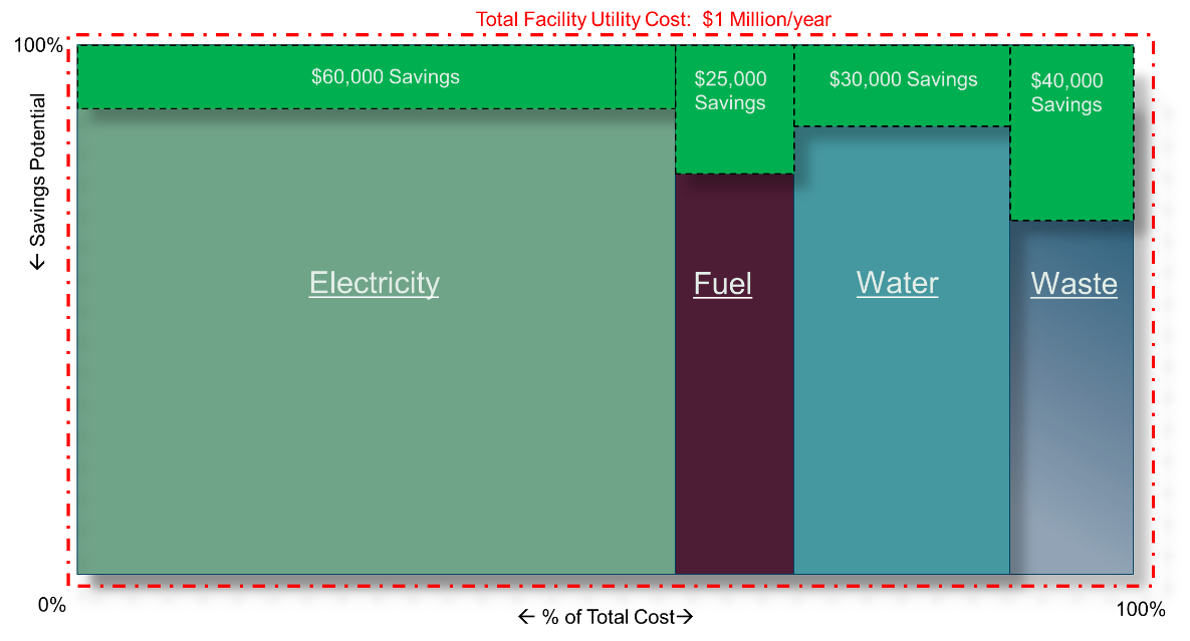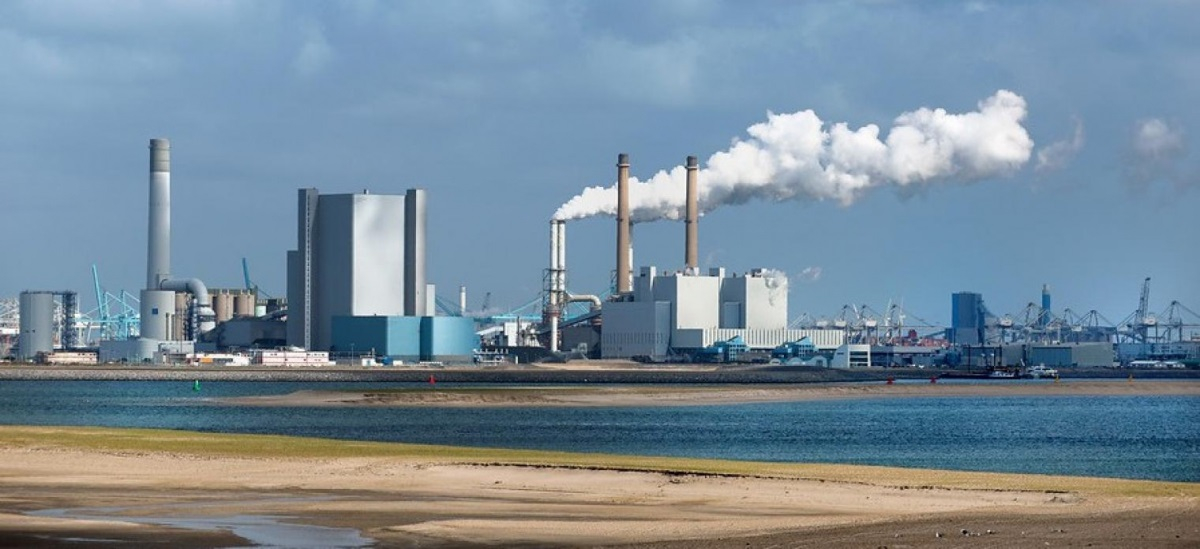Learn our secret to cost savings in 100 facilities assessed over the past several years. Hint - utility expenditures.
What if a cost saving opportunity existed in your facility, but was hiding in plain sight?
In assessing nearly 100 global facilities over the past few years, the Antea Group team identified meaningful cost savings in every facility we evaluated, without exception. Our secret? Knowing where and how to look at utility expenditures.
Understanding overall utility costs is the foundation of our pragmatic approach. The total size of a cost saving opportunity is a function of total utility spend multiplied by the savings potential for each utility category.
Priorities Matter
To make the biggest impact on the bottom line, efforts should be prioritized based on largest spend and largest savings potential. For instance, during a recent client engagement, we discovered that fuel costs were only 2% of total utility spend whereas electricity was over 60%. Logically, initial efforts focused on managing electricity costs to achieve the greatest savings. This does not mean fuel management is unimportant; it simply wasn’t the top priority in a reality of limited time and resources.
To be effective, efforts must be focused and systematic. By outlining total utility spend and cost savings potential, broken out by utility category, we can establish a prioritized path to “chip away” at costs. The illustration below provides an example output from such a process.

To assist facilities interested in applying a pragmatic and focused approach, we leveraged our experience to define the following steps for realizing tangible business outcomes:
1. Get a Clear Picture
Start by understanding the size of the total utility spend for a given facility and how the spend is divided into specific categories (e.g., electric, fuel types, water, etc.). Then you can begin prioritizing your efforts to make the largest impact.
2. Investigate Options
Determine which category has the largest overall spend and warrants a deeper dive to understand costs drivers. The objective is to gather more specific clues about facility areas and investigate in greater detail or decide that certain costs must be accepted and budgeted for. In the above example, making electricity the top priority is a wise choice since it reflects 66% of overall spend and a significant annual cost of $4,785,000. Having selected this category, evaluate what variables or operational areas have the greatest impact on electricity use. Is it an increase in production? A heat wave? A change in a product line? Or other factors?
Using your short list of variables or operational areas, conduct simple pattern and regression analyses on the individual variables to pinpoint where the greatest opportunity lies. As an example, if electricity costs increase drastically with cooling degree days, then it would be advisable to investigate ideas around increasing HVAC efficiency and bolstering the building envelope.
3. Inspect Key Areas
After identifying a few key areas with the largest impact on cost savings, a facility self-assessment can be completed onsite to physically inspect the condition and operation of relevant equipment. Are there obvious opportunities such as dated HVAC equipment or insufficient insulation as the above analysis might illustrate? Also look at common opportunities such as inefficient lighting or compressed air leaks. You can find plenty of online guidance to evaluate such opportunities. Energy auditors refer to such opportunities as “low hanging fruit.”
4. Engage a Seasoned Perspective
Consider a third-party energy assessment. This fresh set of expert eyes will bring experience from other facilities and industries that can be invaluable. Such experts can often identifying additional low hanging fruit that may be overlooked while also evaluating bigger opportunities with acceptable return on investment and sustained savings. The process for commissioning such an assessment is straightforward and typically follows this approach:
- 3 Weeks Before Assessment: complete a questionnaire requesting facility specific data.
- 1 Week Before Assessment: schedule a call with the facility to address final visit preparations, agenda, and clarification questions.
- During Assessment: experts visit the facility for 1-3 days, depending on size and complexity, to identify, evaluate, monetize, and prioritize savings opportunities.
- 1 Week After Assessment: experts submit a summary report and recommendations.
Learn more about Antea Group’s energy management consulting and assessments.
5. Review Invoices Carefully
Finally, it is strongly advised to task internal and/or external energy experts with thoroughly reviewing utility invoices. Utility invoices are notoriously complex and vary widely by locale, utility provider, and facility contract.
Antea Group has helped clients reduce utility charges by identifying many cost saving opportunities realized with simple operational adjustments. A classic example of this is running energy intensive equipment during off-peak hours to avoid expensive peak-demand charges. In addition, building a positive relationship with local utility representatives can be advantageous, allowing you to fully understand the charges, and ensure you are taking full advantage of rebate and incentive programs.
Ready to take the next step in reducing your utility costs? If we can help, please let us know.
Want more news and insights like this?
Sign up for our monthly e-newsletter, The New Leaf. Our goal is to keep you updated, educated and even a bit entertained as it relates to all things EHS and sustainability.
Get e-NewsletterHave any questions?
Contact us to discuss your environment, health, safety and sustainability needs today.





